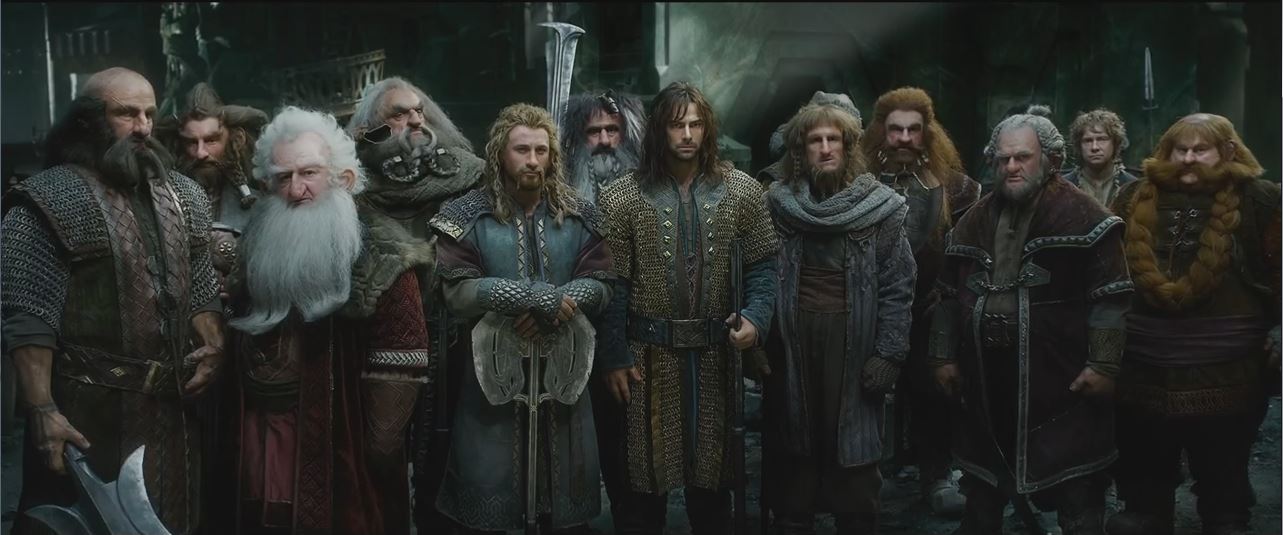Where Tolkien got the Hobbit Names

I just finished “reading” (i.e., listening to the audio books of) a few Dostoevsky novels and stories, hence my reading queue had an opening. I decided to finally return to the Prose Edda, a 13th century collection of Norse Mythologies and one of the great classics of Scandinavian literature.
It’s rough going at points. Lots of Icelandic names. That’s one of the reasons I’m listening to it on audio, as I do with Dostoevsky, rather than slogging through the text.
Anyhow, I’m stumbling through the Prose Edda, minding my own business, when I come across a remarkable passage I want to share with you Tolkien fans.
The surprising passage is from the second part of the Prose Edda, titled “Gylfaginning”, which is about the adventures of Gylfi.
In this passage, Gangleri is quizzing Harr about what he knows. Harr is then showing off his knowledge of gods and nature. At the end, Harr explains how the “dwarves” were made under the earth.
The first two long paragraphs I include to give you a flavor. Then notice the names of the dwarves at the bottom.
XIII. …“Then said Gangleri: “What is the way to heaven from earth?” Then Hárr answered, and laughed aloud: “Now, that is not wisely asked; has it not been told thee, that the gods made a bridge from earth, to heaven, called Bifröst? Thou must have seen it; it may be that ye call it rainbow.’ It is of three colors, and very strong, and made with cunning and with more magic art than other works of craftsmanship. But strong as it is, yet must it be broken, when the sons of Múspell shall go forth harrying and ride it, and swim their horses over great rivers; thus they shall proceed.” Then said Gangleri: “To my thinking the gods did not build the bridge honestly, seeing that it could be broken, and they able to make it as they would.” Then Hárr replied: “The gods are not deserving of reproof because of this work of skill: a good bridge is Bifröst, but nothing in this world is of such nature that it may be relied on when the sons of Múspell go a-harrying.”
XIV. Then said Gangleri: “What did Allfather then do when Ásgard was made?” Hárr answered: “In the beginning he established rulers, and bade them ordain fates with him, and give counsel concerning the planning of the town; that was in the place which is called Ida-field, in the midst of the town. It was their first work to make that court in which their twelve seats stand, and another, the high-seat which Allfather himself has. That house is the best-made of any on earth, and the greatest; without and within, it is all like one piece of gold; men call it Gladsheim. They made also a second hall: that was a shrine which the goddesses had, and it was a very fair house; men call it Vingólf. Next they fashioned a house, wherein they placed a forge, and made besides a hammer, tongs, and anvil, and by means of these, all other tools. After this they smithied metal and stone and wood, and wrought so abundantly that metal which is called gold, that they had all their household ware and all dishes of gold; and that time is called the Age of Gold, before it was spoiled by the coming of the Women, even those who came out of Jötunheim. Next after this, the gods enthroned themselves in their seats and held judgment, and called to mind whence the dwarves had quickened in the mould and underneath in the earth, even as do maggots in flesh. The dwarves had first received shape and life in the flesh of Ymir, and were then maggots; but by decree of the gods had become conscious with the intelligence of men, and had human shape. And nevertheless they dwell in the earth and in stones. Módsognir was the first, and Durinn the second; so it says in Völuspá.
Then strode all the mighty to the seats of judgment, The gods most holy, and together held counsel, Who should of dwarves shape the peoples From the bloody surge and the Blue One’s bones. They made many in man’s likeness, Dwarves in the earth, as Durinn said.
And these, says the Sibyl, are their names:
Nýi and Nidi,
Nordri and Sudri,
Austri, Vestri,
Althjófr, Dvalinn;
Nár, Náinn,
Nípingr, Dáinn,
Bifurr, Báfurr,
Bömburr, Nóri, Óri, Ónarr,
Óinn, Mjödvitnir,
Viggr and Gandálfr,
Vindálfr, Thorinn,
Fíli, Kíli,
Fundinn, Váli;
Thrór, Thróinn,
Thekkr, Litr and Vitr,
Nýr, Nýrádr,
Rekkr, Rádsvidr.
And these also are dwarves and dwell in stones, but the first in mould:
Draupnir, Dólgthvari,
Hörr, Hugstari,
Hledjólfr, Glóinn;
Dóri, Óri,
Dúfr, Andvari,
Heptifíli,
Hárr, Svíarr.
Recognize any of those?
If not, try again after reading the list of Dwarves who accompany Bilbo to fight Smaug in The Hobbit:
Dwalin, Balin, Kili, Fili, Dori, Nori, Ori, Oin, Gloin, Bifur, Bofur, Bombur, and Thorin.
Of the 13 Dwarves, all the names appear on this list except Dwalin, Balin, with slight spelling variations.
Kili, Fili, Dori, Ori, Oin (Oinn), Gloin (Gloinn), Bifur (Bifurr), Bofur (Bafurr), Bombur (Bomburr), and Thorin (Thorinn or Throinn).
For bonus effect, you may have also spotted Gandalf (Gandalfr) on this list.
All this information is on Wikipedia, but it’s more fun to stumble across it yourself in context and without warning.
So there you have it. Tolkien’s Dwarf (and Wizard) names derive from the Prose Edda, Part 2, Sections 13 and 14.
Subscribe to The Buhler Report
Get the latest posts delivered right to your inbox